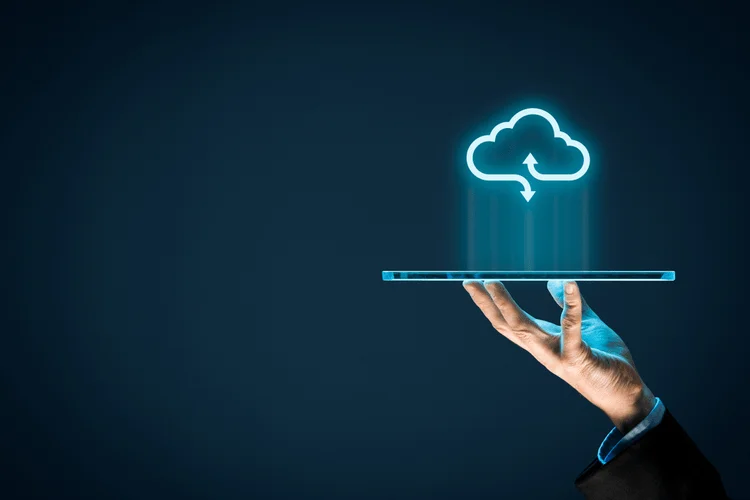It is a distributed decentralized infrastructure that uses nodes over the network for deployment. Edge and fog computing can be extra expensive than conventional cloud computing, specifically in case you are a small enterprise (SMB) in the early section. Deploying and setting distributed computing nodes, checking hardware compatibility, and dealing with resources require assets and might lead to upfront costs. Fog presents three totally different cloud infrastructure models, including Platform as a Service (PaaS), Infrastructure as a Service (IaaS), and Software as a Service (SaaS). Fog computing provides centralised user management assist, and cloud administration can both be centralised or delegated to a 3rd celebration.
Cloud computing is geo-distributed, meaning that it depends on a network of cloud servers which are typically unfold out across multiple geographical regions. Cloud computing is designed for massive scalability by adding more servers and resources to the centralized knowledge facilities. Scaling is achieved vertically by increasing the resources inside a data middle. Cloud computing allows users to easily scale up or down based mostly on demand. Configuring fog computing offers organizations more options for processing information in a correct method, which is advantageous. Fog computing has management over the info that could be managed locally and transferred to the server.

Ultimately, only careful evaluation may help you make the most effective choice for your organization. Edge figuring was made due to Internet of Things devices’ momentous advancement, which companions with the net to tolerate information from the cloud or move on knowledge again to the cloud. At the identical time, autos can switch knowledge to a central cloud server by way of WAN to alert different drivers who may need to take any particular route to succeed in their destination. Smart cities want cloud computing to offer an interactive and efficient expertise to their residents. It can contribute to public safety, tourism, transportation, and urban consumption. Cloud systems play a key function in analyzing video streams and making certain safety.
Cloud computing depends on centralized information storage, with all processing and evaluation going down at a central location. Cloud computing provides internet-hosted services fog computing vs cloud computing to customers based on their calls for. Using it, one can access info no matter geographic location.
Generative Ai For Enterprise Methods
Additionally, given its decentralized nature, fog computing is better suited to supporting extremely dynamic environments or these with low bandwidth connectivity requirements. Overall, fog computing and cloud computing similarities prevail from a high-level perspective, their individual strengths make them suitable for different functions within the realm of modern know-how. The time period “Edge Computing” refers back to the processing as an appropriated worldview. It brings details about knowledge and registers energy nearer to the gadget or information source the place it is usually required.
With the rise of the Internet of Things (IoT) and the proliferation of sensible gadgets, conventional cloud computing options are facing new challenges. Edge computing and fog computing have emerged as potential options to those challenges, providing new methods of processing and analyzing information in actual time. On one hand, cloud computing is extremely dependent on having a robust and dependable core community.
The fog layer supplies further security measures to edge devices, corresponding to encryption and authentication. This helps to guard sensitive data from unauthorized access and cyberattacks. There is a big debate at present on which know-how is better for businesses – fog computing or cloud computing. Here, we will discover the key advantages of both technologies so that you can differentiate cloud computing from fog computing and make an knowledgeable choice for your corporation.
Cloud computing is a centralized model where information is stored, processed, and accessed from a remote information center, whereas fog computing is a decentralized model the place information is processed closer to edge gadgets. Edge computing and fog computing are two ideas that are usually used interchangeably, but they have important variations. Edge computing is a decentralized computing mannequin that brings information processing closer to the gadgets and sensors that generate it. Fog computing, however, is a distributed computing model that extends the capabilities of edge computing to a bigger network of gadgets and sensors.
Fog computing is a more decentralized type of cloud computing whereby the computing technology is between a cloud and a data supply or another knowledge heart. However, fog computing requires extra infrastructure, which may be costly to arrange and keep https://www.globalcloudteam.com/. Additionally, cloud computing is more flexible as a outcome of it could be used along side other forms of networks. For these reasons, it is unlikely that fog computing will completely replace cloud computing.
Cloud Computing
Since the processing is distributed across multiple devices, managing and coordinating them could be challenging. Additionally, the limited assets and computing power of edge gadgets could prohibit the complexity of computations that may be carried out. Furthermore, scalability may be a difficulty if the variety of devices and knowledge volume will increase significantly. Despite these limitations, fog computing proves to be a viable option for IoT tasks that require low latency, enhanced privateness, and offline capabilities. There is one other technique for data processing just like fog computing – edge computing. The essence is that the info is processed instantly on the units with out sending it to other nodes or data centers.
- Off-premises services present the scalability and suppleness needed to handle and analyze data collected by linked devices.
- Additionally, reliance on the internet introduces latency and the chance of service disruptions in case of community outages.
- Fog computing provides centralised user administration help, and cloud administration can either be centralised or delegated to a 3rd get together.
- It makes use of native sport centers to ensure low latency and a greater experience during multiplayer on-line gaming.
- It can detect the variety of people and vehicles on the highway and measure the velocity of vehicles to show warning signals.
This means that cloud computing tends to be extra vulnerable to points with quality and consistency than fog computing since failures at one location have an result on the complete system. Ultimately, while both models have their advantages and downsides, it is clear that cloud computing isn’t a great choice for all functions and industries. There is a lot of debate in the tech world in regards to the relative merits of cloud computing and fog computing. Both strategies have their professionals and cons, however one key issue that units them aside is responsiveness. In phrases of velocity and effectivity, cloud computing has a clear edge over Fog computing. Due to its nature, fog computing needs to make the most of numerous server nodes to process the info.
Pros Of Cloud For Iot
Cloud computing relies heavily on centralized networking and communication, utilizing massive data centers to attach customers to information and functions. In contrast, fog computing operates by way of a extra distributed network, with particular person units serving as factors of contact between users and information sources. This allows for sooner communication speeds and extra environment friendly useful resource allocation, making fog computing a gorgeous alternative for many trendy purposes. This allows users to access information extra shortly and effectively through centralized hubs whereas also minimizing the danger of latency or connection issues that may come up with cloud-based techniques.

There are several kinds of fog computing, including client-based, server-based, and hybrid fog computing. Take No Stress and Learn Cloud Computing from scratch with KnowledgehutHut, an internet course that may vanish away all your ifs and buts with particular cloud computing steering from trade consultants. It uses native recreation centers to make sure low latency and a better experience throughout multiplayer on-line gaming. The healthcare trade is at all times in need of technologies to detect and tackle emergencies in real-time. Fog computing allows wearables, blood glucose displays, and other health devices to find out about critical situations, like a stroke, upfront. The most distinguished use of fog computing in IoT is video surveillance which is utilized in purchasing malls, streets, and different large public areas.
Cloud computing, however, is a centralized computing model that relies on distant servers to retailer, handle, and course of knowledge. In cloud computing, the info generated by IoT units is transmitted to cloud servers through the internet for analysis and storage. Firstly, it supplies nearly unlimited storage and computing energy, permitting for the handling of massive datasets. Secondly, cloud computing provides seamless scalability, enabling simple enlargement as the project grows. Lastly, it supplies accessibility and suppleness, permitting customers to access data and functions from anywhere with an internet connection. Edge computing and fog computing are two complementary computing fashions that are designed to deal with the challenges of processing and analyzing data in real time.

Edge computing is especially helpful for IoT initiatives because it offers bandwidth savings and better information security. Cloud computing is a kind of computing that depends on distant servers to store and process information. Rather than storing files or purposes on a neighborhood exhausting drive, cloud-based methods rely on a network of linked servers to retailer and supply access to various kinds of info.
Evaluating Fog Computing And Cloud Computing For Iot Initiatives
Fog computing, also identified as edge computing, is a decentralized computing mannequin that brings computation and data storage nearer to the sting devices. In fog computing, the processing and analysis of information happen on devices located near the info supply, similar to gateways or edge servers. Firstly, fog computing reduces latency by processing information domestically, enabling real-time decision-making. Secondly, it enhances privacy and security by keeping sensitive data within the local community. Lastly, fog computing supplies offline capabilities, guaranteeing uninterrupted operation even in the absence of a steady internet connection.

Still, cloud computing remains in style because of its larger flexibility and increases scalability, making it ideal for a broad range of use circumstances. Overall, selecting between these two methods depends largely on your particular needs and targets as a user or developer. As such, when considering the professionals and cons of cloud vs fog computing, the query of location consciousness turns into an essential issue to consider.